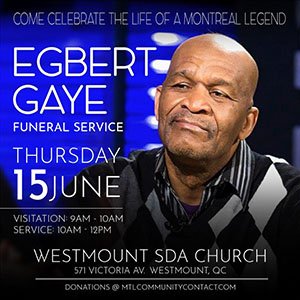From Port of Spain, T&T, to Liverpool, England to Vancouver, Canada where
By John Leblanc
Joseph S. Fortes was born in Port of Spain, Trinidad, on February 9, 1863.
When Joe was 17, he left his country of birth for England. In the city of Liverpool where he resided for the next five years, Joe learned to swim at the St. Georges baths. In time, he became known as an accomplished swimmer and diver and won a three- mile race across the Mersey River. He was also a part of an 11-person swim team that toured English and French seaside resorts and was a recipient of gold medal for lifesaving.
In 1884, Joe left Glasgow, Scotland, on board the windjammer “Robert Kerr” on an ill-fated voyage. After sailing and arriving at Cape Horn, the most southern point of South America, they encountered rough seas, which battered and damaged the ship.
The captain died, but they somehow managed to make their way out of Cape Horn then sailed north up the Pacific Coasts of South then North America, until they reached the island of San Juan in Washington State. It was there that the “Robert Kerr” was grounded. In time the crew was able to re-float the ship and depart for Vancouver. Upon arrival, the ship was declared unseaworthy and sold.
After receiving his pay, Joe disembarked on September 30, 1885, and headed into the city to find work. No one could have imagined that this man would one day become one of the most beloved citizens of Vancouver.
Joe found work as a porter and ran one of the first shoe shine stands in the city at the Sunnyside Hotel on water Street until the great fire of 1886, which consumed the hotel, but Joe was able to secure most of the hotel guests’ luggage, and escort a woman and her son to safety.
He later worked as a bartender at the Bodega Saloon, and for a period at the Alhambra Hotel on the corner of Water and Carrall Streets.
The local population knew him to be a sober and clean individual who, while working as a bartender, preached moderation and discouraged excessive drinking.
In the warmer weather, Joe lived on the beach in a tent at English Bay where he was a common sight, all the while doing odd jobs to support himself, he also became well-known for his volunteer work at the beach as a swimming instructor, lifeguard and guardian of the beach. People lovingly referred to him as “English
Bay Joe” or “Old Black Joe.”
Indeed, thousands of children would learn how to swim, with Joe as their instructor, gently holding them and saying: “Kick yo’ feet chile. Kick yo’ feet.”
Families who sent their children to the beach in the summer advised their children that they were to “stay close to Joe.”
As a guardian, he was known to be a terror to hoodlums and anyone else misbehaving on his beach. He would later build and reside in a cottage on Bidwell Street overlooking the beach.
Joe’s good deeds and volunteer services did not go unnoticed; around 1897 the city put him on its payroll as its first official lifeguard and a special police constable.
In 1898, Joe rescued J.C. McCook, the U.S. Consul General for Dawson City from drowning. According to local newspapers, the consul was the fifth person whom Joe had saved, by 1903 that figure had risen to 11. Among the people he also rescued was John Hugo Ross whom would later die in the sinking of the Titanic. In total, he is credited with saving 29 individuals, both children and adults, but it is believed that he saved the lives of close to 100.
For his many years of service, in 1910 the city honoured Joe by presenting him with a gold watch, a cheque and an illuminated address. After receiving the gifts from the city he reportedly said: “I’ve always tried to do my best at the bay, and I shall try to keep that reputation.”
In January 1922 Joe became ill and was carried by stretcher to Vancouver General Hospital. He gave the beat cop whom he met on the way to the hospital instructions on the care of his beach. On February 4, 1922, our hero died and thousands of people from all walks of life turned out for what was, at that time, the largest funeral in Vancouver’s history. Holy Cross Cathedral overflowed with mourners. The men’s Holy Cross choir sang hymns and the sweet smell of flowers and incense filled the cathedral.
Schoolchildren who were able to attend the service placed a huge mountain of single-cut flowers on his coffin, those who were unable to attend held a moment of silence in their schools for Joe and were then taught a lesson on the importance of devotion to duty and self-sacrifice.
Mourners lined the streets and bowed their heads and took off their hats as the procession made its way through the city. As the Elks brass band played, mounted police in full dress uniform escorted the procession of mourners along Granville then Hastings to Main and southward to Mountain View Cemetery.
City gardeners cut their finest flowers and evergreen boughs from Stanley Park, which were placed in a rowboat atop a float, which followed Joe’s hearse. The funeral procession which followed was led by the Mayor, City Councillors, the Chief of Police, Constables, members of the Police Commission, School board and
Parks Board Officials and Staff.
Rev. William O’Boyle spoke the following at Joe’s gravesite: “You do honor not only to Old Joe, who has just gone out with the tide on the great ocean of eternity, but to yourselves, indeed, in gathering to tender solemn homage of respect for the passing of a great soul.”
A flat stone marks his resting place. This stone is simply inscribed “Joe.”
The citizens, children and the Kiwanis Club of Vancouver then raised $5,000 by subscription, and erected a polished granite bronze memorial drinking fountain in memory of Joseph Seraphim Fortes. The fountain is located in Alexandra Park just above the sandy beach on English Bay where Joe lived and worked, rescued and taught so many of Vancouver’s citizens to swim.
Surrounded by multi-coloured shrubs and flowers, this memorial is a testament to the citizens’ love for their hero, Joe Seraphim Fortes. On the front is a large bronze bust of Joe in a suit and tie with three little children playing in the water below him.
On the back of this stone monument is an inscription that reads: “This fountain erected by the citizens and children, co-operating with the Kiwanis Club of Vancouver, commemorates the life and deeds of “Joe” Fortes, for many years guardian of this beach.
Little children loved him. A.D. 1927.”
In 1998, 70 years later, another generation of Kiwanis, an organization well known for its charitable work restored this memorial water fountain.
On May 20, 1976, the Vancouver Public Library opened the Joe Fortes Branch.
In 1985, The Joe Fortes Seafood & Chop House restaurant opened in Vancouver.
In 1986, the Vancouver Historical Society named Joseph Seraphim Fortes “Citizen of the Century.”
In 2002, Joe was the subject of a National Film Board of Canada animated short called “Joe.”
In April 2012, Lisa Anne Smith & Barbara Rogers published their book entitled “Our Friend Joe: The Joe Fortes Story.”
In 2013, on the 150th anniversary of his birth, and in recognition of the contributions made by this outstanding Canadian, the government of Canada issued a commemorative stamp in his honor.
I take this opportunity to remember all the good deeds of Joe Seraphim Fortes and to hold him up as a worthy example for all people to emulate.
















